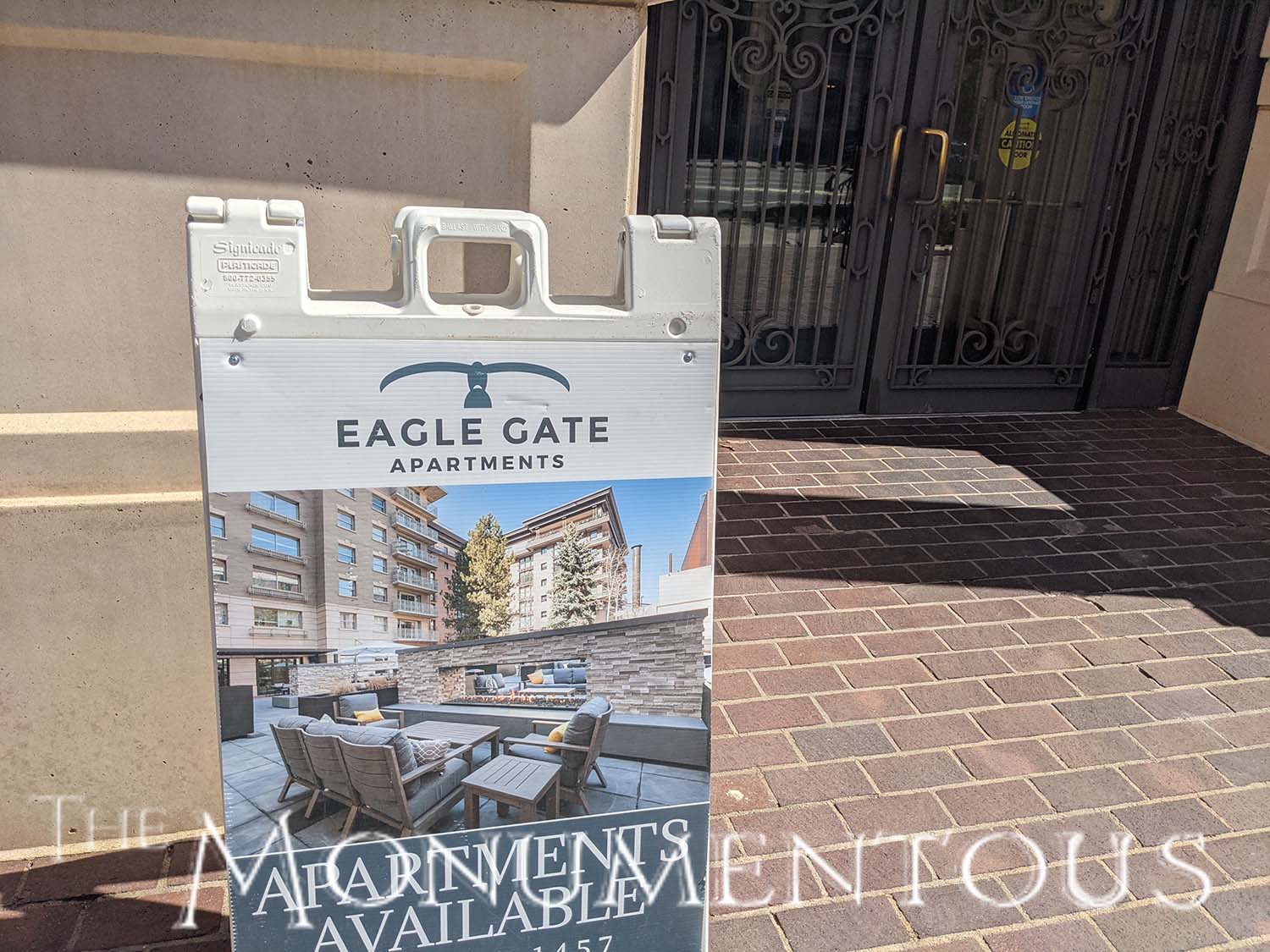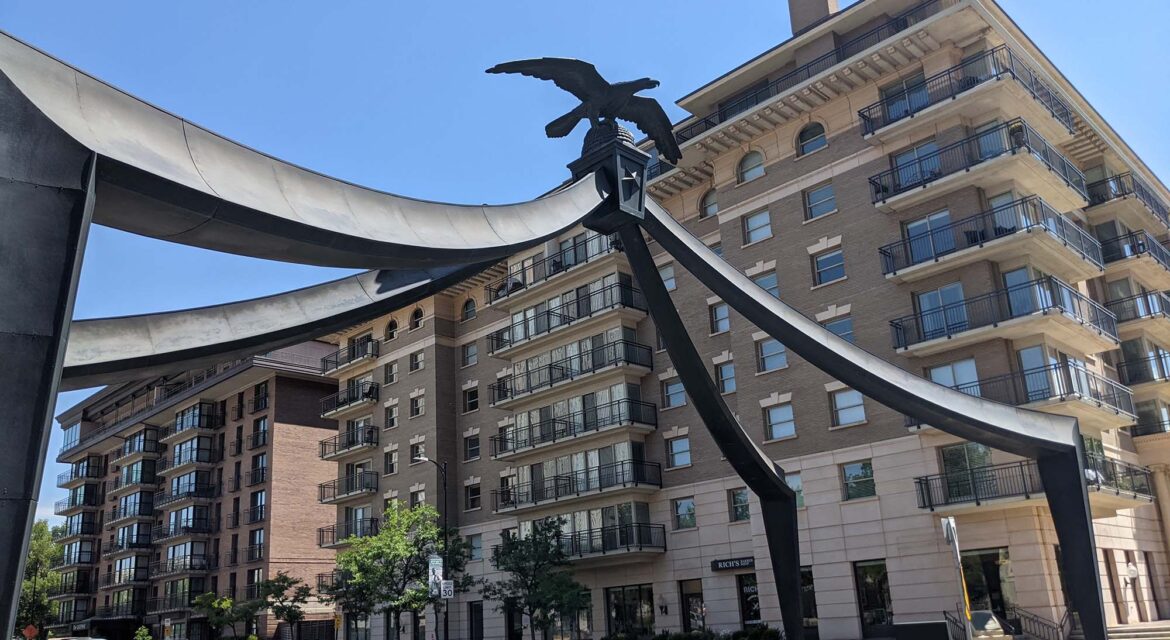
Situated at the intersection of State Street at South Temple, Eagle Gate has become a prominent landmark in Salt Lake City, Utah. It has changed form and function over the years but the connection it has to the legacy of the area is bolstered by the size and placement of the monument. These elements have allowed it to inspire and connect with audiences in multiple ways.

From Literal Gate to Iconic Arch
 First erected in 1859, what became known as Eagle Gate served as the entrance to the homestead of Bringham Young, who founded Salt Lake City. Large walls protected his property at the mouth of City Creek Canyon but Eagle Gate allowed one-way traffic to flow in and out. The original eagle and supporting beehive were carved from five laminated wood blocks and rested on curved wooden arches. Travelers had to pay a toll to pass the gate.
First erected in 1859, what became known as Eagle Gate served as the entrance to the homestead of Bringham Young, who founded Salt Lake City. Large walls protected his property at the mouth of City Creek Canyon but Eagle Gate allowed one-way traffic to flow in and out. The original eagle and supporting beehive were carved from five laminated wood blocks and rested on curved wooden arches. Travelers had to pay a toll to pass the gate.
In 1891 the gates were removed and the toll was eliminated with the street being opened to the public. At this time, the road was widened to two lanes while the eagle was repaired and electroplated in copper. The monument was refurbished in 1947 but in 1960, the street was widened again to accommodate modern automobiles and traffic. This compelled an entirely new vision for the monument.
Known as the third generation Eagle Gate, the current monument was dedicated in 1963 and is more of a decorative arch than functional gate. The 76-foot span of the piece is far larger than the previous structures. The current eagle atop the monument is a replica of the original bird out of bronze. Weighing over 4,000 lbs., it has a 20-foot wingspan and 10-foot-long body. The original wooden eagle is on display at the Daughters of Utah Pioneers Museum.
This history has connected Eagle Gate to Salt Lake City in a tangible way, which can be seen in terms of how it has been embraced all across the community.

Connected to the Culture and Economy of Salt Lake City
 Eagle Gate is listed on numerous guides and maps to the city, cultivating attention for the area that has allowed it to become known as one of downtown Salt Lake City’s most prominent landmarks. Located adjacent to Temple Square and residing outside of what has become the historic home of Bringham Young, the monument is an icon that is utilized in direct and indirect ways.
Eagle Gate is listed on numerous guides and maps to the city, cultivating attention for the area that has allowed it to become known as one of downtown Salt Lake City’s most prominent landmarks. Located adjacent to Temple Square and residing outside of what has become the historic home of Bringham Young, the monument is an icon that is utilized in direct and indirect ways.
Organizations like Eagle Gate Title have incorporated the history and imagery of the monument into their brand. Other nearby businesses have similarly utilized the attention that Eagle Monument has cultivated. This connection has fueled opportunities for organizations of all types and sizes.
Recognized as one of Salt Lake City’s best examples of Mid-Century Modern design, Eagle Gate has been able to cultivate the attention and interest of residents by positioning it as a means of identity. A monument whose size and scope are impossible to ignore has further enabled this connection to ensure that it resonates with audiences in the present and will continue to do so in the future.

Beyond Legacy
 Eagle Gate is connected to the legacy of Salt Lake City on multiple levels but the cultural and economic opportunities it has cultivated go beyond this legacy. At a size that is impossible to ignore, Eagle Gate allows audiences to both admire and interact with it, highlighting what’s possible when a landmark dominates a space to become an icon that resonates across eras.
Eagle Gate is connected to the legacy of Salt Lake City on multiple levels but the cultural and economic opportunities it has cultivated go beyond this legacy. At a size that is impossible to ignore, Eagle Gate allows audiences to both admire and interact with it, highlighting what’s possible when a landmark dominates a space to become an icon that resonates across eras.

